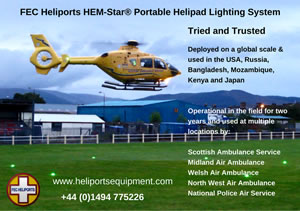Boeing Defense, Space & Security2006-12-07 19:41:35
Boeing Demonstrates Interoperability between TSAT and BAE Systems' Airborne Lasercom Risk Reduction Terminal
Boeing recently demonstrated communication capabilities between its Transformational Satellite Communications (TSAT) laser communications terminal and BAE Systems' Airborne Lasercom Risk Reduction Terminal (ALT), which included a telescope, optical bench assembly, and closed-loop pointing and tracking hardware.
The demonstration, presented to MILSATCOM Systems Wing officials and members of the TSAT user community, used several optical waveforms to route TSAT communication signals through the ALT Risk Reduction Terminal at data rates of up to 10 gigabytes per second. On command, the TSAT terminal dropped its link to the ALT risk reduction terminal and acquired and established communications with a second emulated TSAT terminal. Testers then reversed the process to illustrate the system's agility. The successful demonstration brings us one step closer to realizing TSAT's ability to serve the airborne community on unmanned systems.
"This demonstration was an important event for the TSAT and ALT risk reduction programs," said John Peterson, Boeing TSAT program director. "We showed that terminals made by Boeing along with our partner Ball Aerospace and terminals built by BAE Systems and Ball could work together to provide risk reduction for the government's Lasercom mission needs."
TSAT is a highly sophisticated communication satellite scheduled to begin U.S. military service by 2014. It is designed to provide conventional communications services and laser communication capabilities to all branches of the military, including space and airborne platforms. The data capacity afforded by the Lasercom service will be extraordinary -- starting at 2.5 gigabytes per second, nearly the equivalent of 150 simultaneous high definition television channels. TSAT will open up new airborne mission possibilities in the areas of command and control, surveillance and reconnaissance.
"TSAT's capabilities for the warfighter are real, and with every successful test we bring them that much closer to fielding the system. We're validating the TSAT technology by continuing to execute these demonstrations flawlessly, which highlights the remarkable progress our team is making," said Charles Toups, Boeing vice president of Navigation and Communications Systems.
The demonstration was prepared, executed and funded by Boeing, BAE Systems and Ball Aerospace Technologies Corp., in parallel with the government's effort on each program. It was an appropriate follow-on to a series of successful government-sponsored TSAT Lasercom demonstrations, Peterson explained.
The Boeing team, which includes Raytheon, Ball Aerospace, General Dynamics, IBM, L-3 Communications, Cisco Systems, BBN Technologies, Hughes Network Systems, Lucent Technologies, Harris, EMS Technologies, ICE and Alpha Informatics, is working under a $514 million U.S. Air Force contract for the TSAT Space Segment Risk Reduction and System Definition program.
The results contained in this submission were generated in whole, or in part, through work supporting the MILSATCOM Systems Wing.
Boeing recently demonstrated communication capabilities between its Transformational Satellite Communications (TSAT) laser communications terminal and BAE Systems' Airborne Lasercom Risk Reduction Terminal (ALT), which included a telescope, optical bench assembly, and closed-loop pointing and tracking hardware.
The demonstration, presented to MILSATCOM Systems Wing officials and members of the TSAT user community, used several optical waveforms to route TSAT communication signals through the ALT Risk Reduction Terminal at data rates of up to 10 gigabytes per second. On command, the TSAT terminal dropped its link to the ALT risk reduction terminal and acquired and established communications with a second emulated TSAT terminal. Testers then reversed the process to illustrate the system's agility. The successful demonstration brings us one step closer to realizing TSAT's ability to serve the airborne community on unmanned systems.
"This demonstration was an important event for the TSAT and ALT risk reduction programs," said John Peterson, Boeing TSAT program director. "We showed that terminals made by Boeing along with our partner Ball Aerospace and terminals built by BAE Systems and Ball could work together to provide risk reduction for the government's Lasercom mission needs."
TSAT is a highly sophisticated communication satellite scheduled to begin U.S. military service by 2014. It is designed to provide conventional communications services and laser communication capabilities to all branches of the military, including space and airborne platforms. The data capacity afforded by the Lasercom service will be extraordinary -- starting at 2.5 gigabytes per second, nearly the equivalent of 150 simultaneous high definition television channels. TSAT will open up new airborne mission possibilities in the areas of command and control, surveillance and reconnaissance.
"TSAT's capabilities for the warfighter are real, and with every successful test we bring them that much closer to fielding the system. We're validating the TSAT technology by continuing to execute these demonstrations flawlessly, which highlights the remarkable progress our team is making," said Charles Toups, Boeing vice president of Navigation and Communications Systems.
The demonstration was prepared, executed and funded by Boeing, BAE Systems and Ball Aerospace Technologies Corp., in parallel with the government's effort on each program. It was an appropriate follow-on to a series of successful government-sponsored TSAT Lasercom demonstrations, Peterson explained.
The Boeing team, which includes Raytheon, Ball Aerospace, General Dynamics, IBM, L-3 Communications, Cisco Systems, BBN Technologies, Hughes Network Systems, Lucent Technologies, Harris, EMS Technologies, ICE and Alpha Informatics, is working under a $514 million U.S. Air Force contract for the TSAT Space Segment Risk Reduction and System Definition program.
The results contained in this submission were generated in whole, or in part, through work supporting the MILSATCOM Systems Wing.
For more information contact:
P.O. Box 516
St. Louis
MO 63166
United States Of America
Tel: +1 206 655 2121
Fax: +1 (61) 295 014 489
